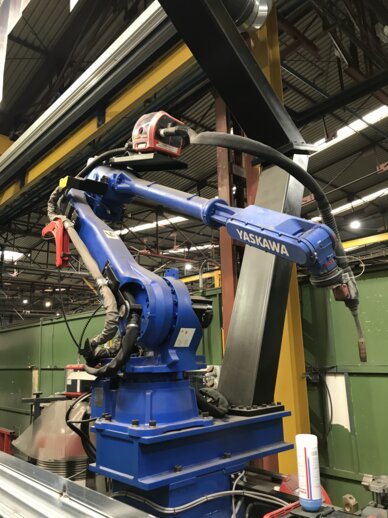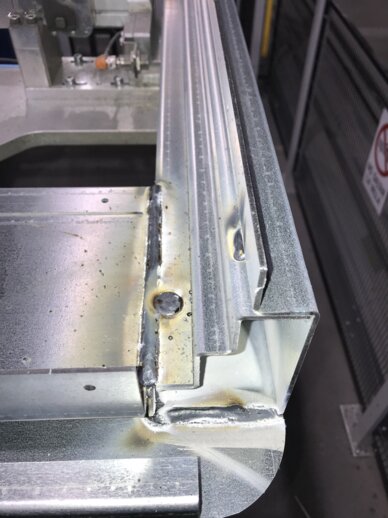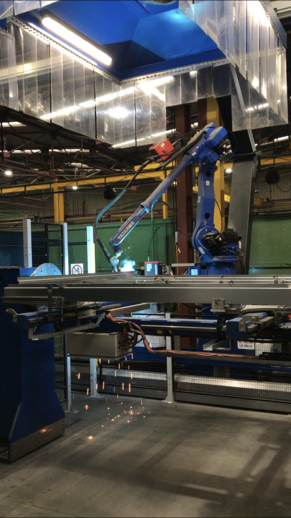Vi gir deg det siste innen robotikk, kontrollteknologi og drivteknologi. Velg mellom et bredt spekter av produkter og tjenester som er både innovative og skalerbare. Vi lager komplette løsninger på dine vilkår.
The Yaskawa robotic welding cell has reduced welding time at Liderkit by 85%
Yaskawa Ibérica designed and installed a two-work station welding cell for the bodywork company Liderkit to fulfil its need for increased production capacity and achieve the highest quality in part finishing.
Liderkit is a leading company in the national and international market in the manufacture of vehicle bodies distributed as kits for assembly. To increase productivity and raise quality levels, they decided to automate welding of the parts. In addition, they wanted to achieve maximum precision throughout the production process and to have a tool that would allow them to cope with any production peaks. Until then, the process had been completely manual. Today, both automated and manual processes run together, and the percentage of frames being welded on the welding robot is gradually increasing.
The challenge was to improve all parts of the welding production process
The main challenge when automating was to improve all the parts involved in the final result in order to save labour costs, increase productivity in the welding section, avoid human error, increase production capacity and automate and standardise this part as much as possible.
On a technical level, the most complicated thing was the automation of the solution itself, as the cell consists of a forming tool that allows a part to be welded without drilling it. Eliminating a part of the process saved a considerable amount of time.
The solution was a robotic welding cell with two work stations
The solution installed by Yaskawa consists of a welding robot and two separate positioners on two separate tables in different areas. In this way, each table is prepared for manual loading and unloading, so that the robot welds alternately on one or the other while the operator simultaneously loads or unloads parts onto the other work table. As a result, maximum use is made of the production time.
The cell consists of the Motoman MH50-20 II robot, which has a reach of 3010 mm, together with a Motoman TSL-1000SD 1-axis servo-controlled track and two Motoman HSB-2000 S2D servo-controlled positioners that can manage a large number of parts for welding. The TSL track moves the robot from work area A to work area B, and so on. In addition, the solution also includes two sets of tools for the process of welding parts of various sizes. The entire solution is located within a fenced area for maximum safety and protection of operators, in accordance with current EU regulations.
The result is higher quality and increased production capacity
Thanks to the welding cell designed and installed by Yaskawa, Liderkit has both managed to standardise the different parts that make up the final welded result, and achieved a higher level of precision in the bending prior to welding. In addition, the quality of the weld finish has improved significantly and the ability to unify several production processes into one has increased. Most notable, however, have been the savings in production time, which has decreased by around 85% for the two types of parts being welded, while production capacity has increased by around 30%.
























